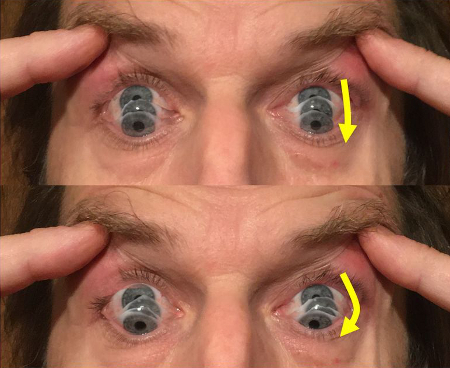Summary
Definition
History and exam
Key diagnostic factors
- postural instability with unexplained (often backwards) falls
- abnormal vertical eye movements
- parkinsonism
- cognitive dysfunction
- rapidly progressive symptoms
Other diagnostic factors
- speech problems
- dysphagia
- behaviour problems
- facial and/or limb dystonia
- apraxia
- sleep disturbance
- constipation
- urinary symptoms
- myoclonus
- pyramidal signs
Risk factors
- increasing age (>40 years)
- exposure to chromate and phosphate
Diagnostic investigations
1st investigations to order
- brain MRI
- levodopa trial
Investigations to consider
- polysomnography
- tilt table test/active stand test
- biopsy of bone marrow or skin
- PCR for Tropheryma whippelii
- 24-hour urinary copper
- paraneoplastic antibody panel
- CSF biomarkers for prion disease
- genetic testing
- PET imaging
- CSF biomarkers for Alzheimer’s disease
Treatment algorithm
all patients
Contributors
Authors
Nahid Olfati, MD
Postdoctoral Researcher
UC San Diego Department of Neurosciences
La Jolla
CA
Disclosures
NO declares that she has no competing interests.
Hamidreza Ghodsi, MD
Postdoctoral Researcher
UC San Diego Department of Neurosciences
La Jolla
CA
Disclosures
HG declares that he has no competing interests.
Irene Litvan, MD, FAAN, FANA, MPhil
Director of the Parkinson and Other Movement Disorders Center
UC San Diego Department of Neurosciences
La Jolla
CA
Disclosures
IR's research is supported by: National Institutes of Health grants: the Michael J Fox Foundation; the Parkinson Foundation; the Lewy Body Association; CurePSP; Roche; Abbvie; Biogen; Centogene; EIP-Pharma; Biohaven Pharmaceuticals; Novartis; United Biopharma; and UCB. She is a member of the scientific advisory board for Amydis, but does not receive funds. She receives her salary from the University of California San Diego and as Chief Editor of Frontiers in Neurology.
Peer reviewers
James H. Bower, MD, MSc
Professor of Neurology
Chair of Division of Movement Disorders
Mayo Clinic
Rochester
MN
Disclosures
JHB receives research support from Novartis, Inc.
Peter Nigel Leigh, BSc, MB, BS, PhD, FRCP, FMedSci
Professor of Neurology
Brighton and Sussex Medical School
Honorary Consultant Neurologist
King’s College Hospital NHS Foundation Trust and University Hospitals Sussex NHS Foundation Trust
Chair
PSP Association Research Committee
East Sussex
UK
Disclosures
PNL declares that he has no competing interests.
Peer reviewer acknowledgements
BMJ Best Practice topics are updated on a rolling basis in line with developments in evidence and guidance. The peer reviewers listed here have reviewed the content at least once during the history of the topic.
Disclosures
Peer reviewer affiliations and disclosures pertain to the time of the review.
References
Key articles
Höglinger GU, Respondek G, Stamelou M, et al. Clinical diagnosis of progressive supranuclear palsy: the Movement Disorder Society criteria. Mov Disord. 2017 Jun;32(6):853-64.Full text Abstract
Bluett B, Pantelyat AY, Litvan I, et al. Best practices in the clinical management of progressive supranuclear palsy and corticobasal syndrome: a consensus statement of the CurePSP Centers of Care. Front Neurol. 2021 Jul 1;12:694872.Full text Abstract
Litvan I, Agid Y, Calne D, et al. Clinical research criteria for the diagnosis of progressive supranuclear palsy (Steele-Richardson-Olszewski syndrome): report of the NINDS-SPSP international workshop. Neurology. 1996 Jul;47(1):1-9. Abstract
Reference articles
A full list of sources referenced in this topic is available to users with access to all of BMJ Best Practice.

Differentials
- Idiopathic Parkinson’s disease (PD)
- Corticobasal degeneration (CBD)
- Multiple system atrophy (MSA)
More DifferentialsGuidelines
- Best practices in the clinical management of progressive supranuclear palsy and corticobasal syndrome
- Clinical diagnosis of progressive supranuclear palsy
More GuidelinesVideos
Tendency to fall on pull test
Slow vertical saccades
More videosLog in or subscribe to access all of BMJ Best Practice
Use of this content is subject to our disclaimer